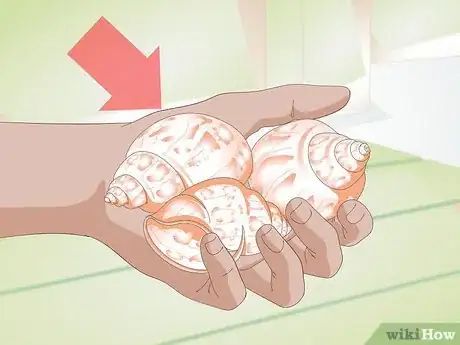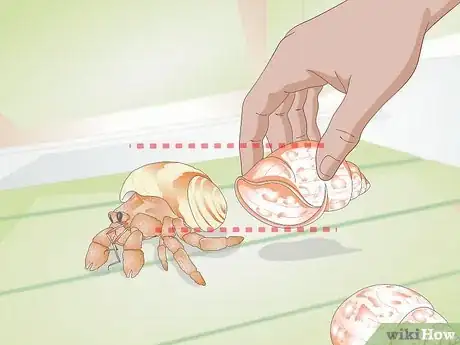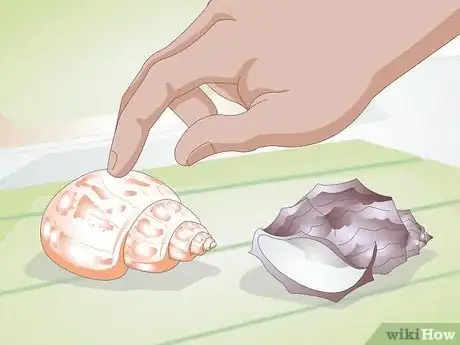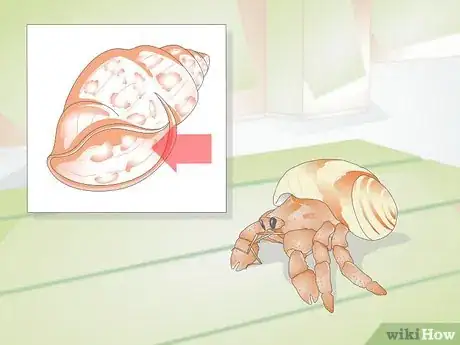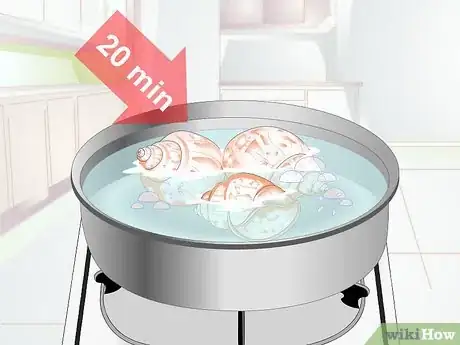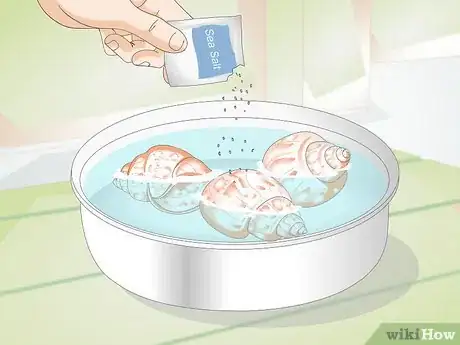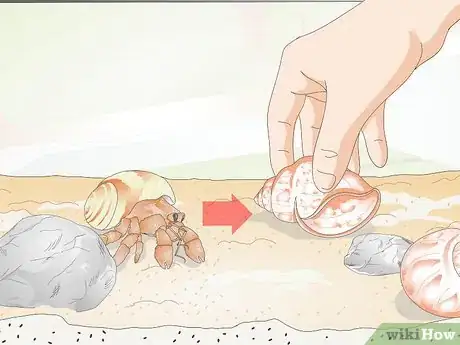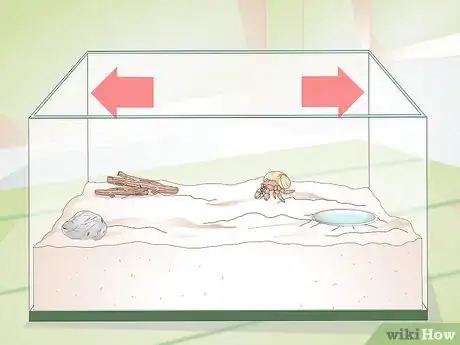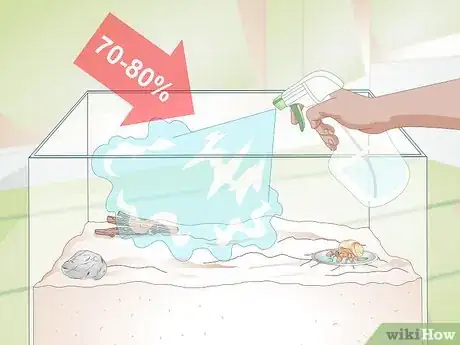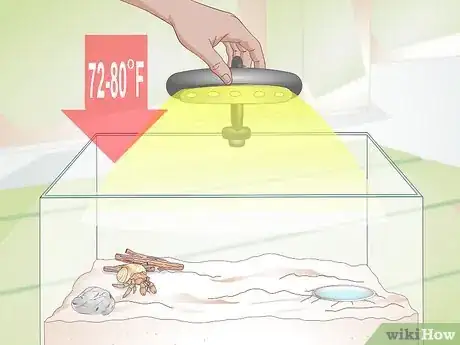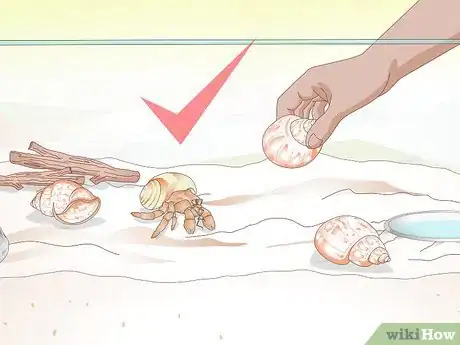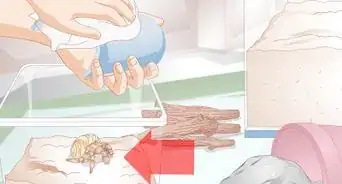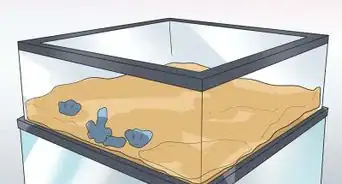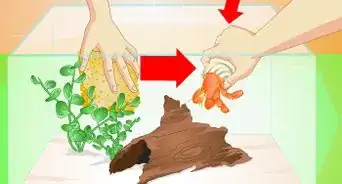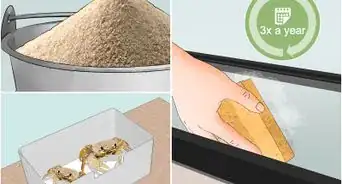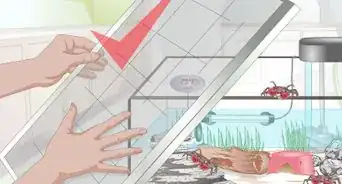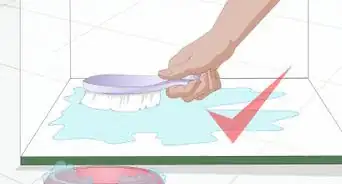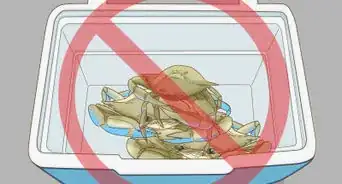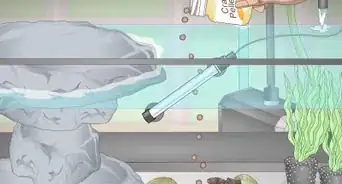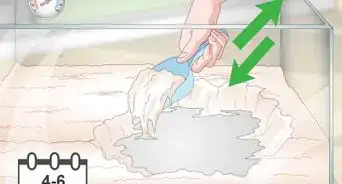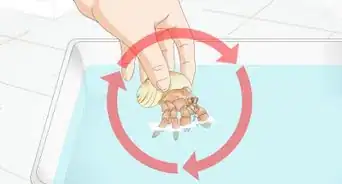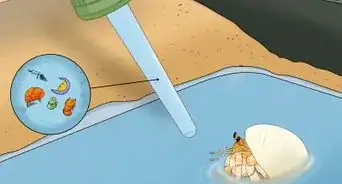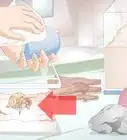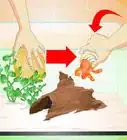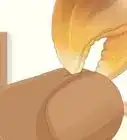This article was co-authored by Pippa Elliott, MRCVS. Dr. Elliott, BVMS, MRCVS is a veterinarian with over 30 years of experience in veterinary surgery and companion animal practice. She graduated from the University of Glasgow in 1987 with a degree in veterinary medicine and surgery. She has worked at the same animal clinic in her hometown for over 20 years.
wikiHow marks an article as reader-approved once it receives enough positive feedback. In this case, several readers have written to tell us that this article was helpful to them, earning it our reader-approved status.
This article has been viewed 127,844 times.
You shouldn't actually “help” your hermit crab to change shells. What you can do is to select the right shells, prepare them properly, and present them to your crab in a healthy environment. This way, when he is ready, he has everything he needs to move to a new a shell. It can be difficult to determine when your crab will need to change shells, so providing your crab with access to new, healthy shells is an important component of hermit crab care.
Steps
Selecting the Right Shells
-
1Provide new shells. First and foremost, if you want your hermit crab to change to a new shell, you must provide some options for him to choose from! Make a variety of shells available to your hermit crab.
- Hermit crab shells can be purchased at pet stores, craft stores, or a variety of online retailers.
-
2Consider size. It is important to remember that hermit crabs grow very slowly. When selecting new shells, you will want to select a few shells that are roughly the same size as the one he is wearing, and a few that are just slightly larger.[1]Advertisement
-
3Select the best type of shells for your crab. Different types of hermit crabs tend to prefer specific types of shells. You can select the best shells for your crab by choosing varieties suited to your crab’s type. If you are not familiar with different shell types, someone at a pet store can help you.[2]
- For example, Coenobita clypeatus (or Purple Pincher) crabs generally prefer turbo shells.
- Coenobita compressus (or Ecuadorian) crabs tend to prefer short shells (such as Thais biserialis, T. orbita, or T. haemastom shells). They also prefer shells that been previously worn, as the inner spiral has often been removed.
-
4Consider other factors. You will also want to select shells for your hermit crab by considering the shape of their opening, as well the thickness of given shells. In both instances, look to the shell your crab is currently wearing for clues.
- Most shells will have either a “D” or “O” shaped opening. Look at the shape of the opening for the shell your crab is currently using, and select new shells that mirror this opening shape.
- All crabs have preferences for the thickness of their shells. Investigate the thickness of the shell your crab is currently using. Then aim to provide alternative shells that share a similar thickness.
- Avoid painted shells. Many pet stores (or craft stores) sell painted shells for hermit crabs to use. These painted shells must be avoided! Although they are cute, the paint can chip and be ingested by your crab, causing him to be very sick. In some cases, the paint used may even be poisonous to crabs.[3]
Maintaining Great Shells
-
1Boil new shells. When you obtain new shells for your hermit crab, it is very important for you to make sure the shells are safe and sanitary. You can do this by boiling your shells. First, use a brush to remove any sand or debris from in the inside and outside of your shell. Then, submerge your shells in boiling distilled water, and boil them for 15-20 minutes.[4]
-
2Moisten shells with saltwater. After your shells have been boiled, they must be moistened with ocean water, or salt water. (Purchasing a saltwater solution from a pet store is the most effective option.) As you wait for your crab to select a new shell, you will want to periodically re-moisten the insides of your shells. This will draw you hermit crab toward the shells, and make the shells more attractive to him.[5]
- Avoid tap water. Most tap water contains trace amounts of copper or other heavy metals. Hermit crabs are extremely sensitive to these metals, and they can hurt your crab.[6]
-
3Place shells where the crab can see them. Once your shells have been properly prepared, place them where your crab can see them. Position them out in the open, on the ground level (substrate) of your crab’s habitat, so that your crab will encounter them daily.
- Once a week (or every other week) you may want to remove the shells, wait a few hours, and then put them back. If your crab has become accustomed to the shells, he may not really recognize them anymore. Removing and reintroducing them may encourage your crab to investigate, and possibly even change shells.
- This is also a good time to re-moisten your shells with saltwater.
Maintaining a Healthy “Crabitat”
-
1Check the size of your tank. In order for your hermit crab to want to change shells, he needs to feel healthy, comfortable, and secure. The first component of a healthy “crabitat” is a good-sized container. You need to estimate five-gallons of space for each hermit crab.[7]
- The best tanks will be made of glass, but plastic may be suitable as well. Avoid mesh or wire cages.
- Look for "aquariums." If you are unsure, ask a pet store sales person to assist you.
-
2Ensure proper humidity. Proper humidity is essential for your crabs comfort and health. Encourage your crab to change shells by maintain a relative humidity level of 70-80% in his tank.[8]
- Install a hygrometer to inform you of humidity levels. When the level drops below 75, spray a fine mist of water into your crabs cage.
- Maintaining the right temperature will help to maintain the humidity levels of your tank.
-
3Make sure the temperature is right. The right temperature is also crucial is your crab’s health and happiness. Maintaining a temperature of 72-80 F (22-27 C) in your “crabitat,” will keep your hermit crab comfortable and happy, and may encourage him to change shells.[9]
- Use a heating pad under your cage or install heat lamps to increase the temperature of your tank.
-
4Provide enough new shells. Watching your hermit crab change shells can be fun and entertaining, but far beyond its entertainment value, having access to numerous, clean shells is essential for your crab’s survival. Help create a healthy environment by ensuring that you have at least three viable, alternative shells available per crab.[10]
- Remember to be patient. Ultimately, you cannot make a hermit crab change shells. Your hermit crab will only change to a new shell when he is comfortable, growing, happy, and most of all, ready.
Warnings
- Do not try to pull the crab out of his shell. The crab will die or be badly injured.⧼thumbs_response⧽
- Never paint shells! This can poison your crab.⧼thumbs_response⧽
References
- ↑ http://www.hermitcrabpatch.com/Hermit-Crab-Shell-Selection-a/149.htm
- ↑ http://www.hermitcrabassociation.com/phpBB/viewtopic.php?t=48249
- ↑ http://www.hermitcrabpatch.com/Hermit-Crab-Shell-Selection-a/149.htm
- ↑ http://animals.mom.me/clean-extra-hermit-crab-shells-1963.html
- ↑ http://crabstreetjournal.org/blog/2012/09/25/help-my-hermit-crab-has-left-its-shell-what-do-i-do/
- ↑ https://www.vetbabble.com/small-pets/hermit-crabs/
- ↑ http://pets.petsmart.com/guides/hermit-crabs/caring-for-hermit.shtml
- ↑ http://pets.petsmart.com/guides/hermit-crabs/caring-for-hermit.shtml
- ↑ http://pets.petsmart.com/guides/hermit-crabs/caring-for-hermit.shtml
About This Article
To help a hermit crab change shells, start by getting a few new shells that are roughly the same size as your crab's current shell and a few shells that are just a little bit bigger. Choose shells that are a similar shape to your crab's current shell, and avoid painted shells since they can be toxic. Then, boil the shells for 15-20 minutes to sanitize them, and moisten the insides of them with salt water. Finally, place the shells in your crab's habitat so it can choose its favorite. For more tips from our Veterinary co-author, like how to keep your hermit crab healthy, read on!
